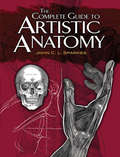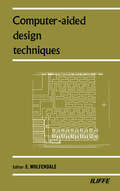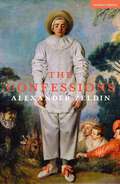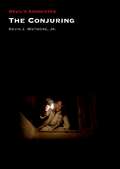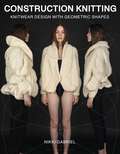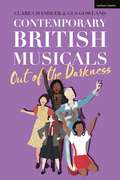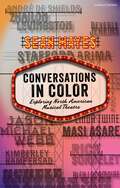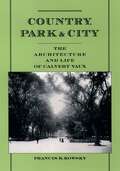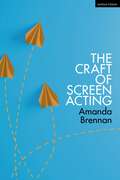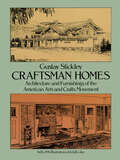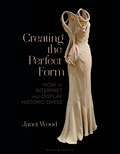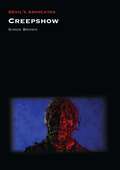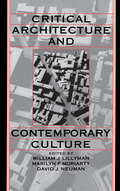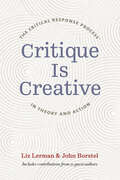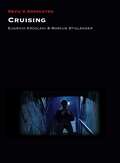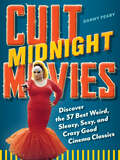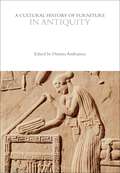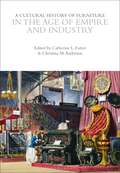- Table View
- List View
The Complete Guide to Artistic Anatomy (Dover Anatomy For Artists Ser.)
by John C.L. SparkesThis systematic presentation illustrates the depiction of bones and muscles, both in detailed close-ups and in larger groups. It starts by discussing the proportions of a human adult and proceeds to define the principal terms used in describing anatomy. Subsequent illustrations depict the skull, bones, muscles, veins, and other aspects of the human figure. In addition to captions, the images are complemented by extensive descriptions that explain bone and muscle placement and function. Nearly fifty finely executed full-page plates and numerous smaller drawings make this a rewarding browsing book as well as an excellent reference for artists.
The Complete Woodcuts of Albrecht Dürer
by Albrecht Dürer W. KurthAlbrecht Dürer was a master in various media, but it was in woodcut design that his creative genius reached its highest expression. Here are all of his extant woodcuts, a collection of over 300 great works containing all the familiar cuts long treasured by the world's art lovers: the celebrated series on the Life of the Virgin, The Apocalypse of John (17 cuts), The Great Passion, St. Jerome in his Study, Samson Fighting the Lion, The Fall of Icarus, The Six Knots, The Men's Bath, St. Christopher, The Virgin in Glory, The Rhinoceros, The Last Supper of 1523, illustrations from Dürer's "The Art of Measurement" and from his four books on human proportion, and many others, including much little-known material. This book is the only available source for many of these works.Although sacred subjects predominate (the Holy Family, scenes from Christ's life, crucifixion, etc., the lives of the saints, Old Testament episodes), many other motifs are treated. There are portraits of prominent men of the ages, book illustrations (secular and religious), coats of arms, the celestial and terrestrial globes, animals, mythological and historical themes, etc. The plates are arranged generally in chronological order permitting the reader to view the development of Dürer's art. From out of the gnarled figures and landscapes one can see the emergence of an individualistic style and skill unrivaled in this sphere.An introduction by Campbell Dodgson and a 34-page textual guide to the plates by Dr. Willi Kurth discuss the evidence and controversies surrounding the authenticity of each work, citing the opinions of all the important Dürer scholars; they also furnish the reader with the historical background of the cuts and of Dürer's life and times — from the years of apprenticeship in Nuremberg to the last works of 1520–1528.All of the woodcuts are reproduced in excellent detail. This book is indispensable for the professional art historian and critic. To the layman with any aesthetic interests at all it will be a source of stimulation and satisfaction that only great art can provide.
Compositor E (Modern Plays)
by Charlie DupréThere's power in that fingerprint of yours. Make sure to use it wisely.London 1623. Apprentice typesetter, 17-year-old John, arrives to work under the mentorship of ambitious printer Isaac Jaggard on a potentially game-changing new commission – Shakespeare's first-ever complete works.As John grapples to stamp a manuscript of Macbeth onto the page, fuelled by his dark past, he finds himself weaving his own narrative into the text. But as the ink sets, he begins questioning who the storytellers really are…Longlisted for the Bruntwood Prize for Playwriting in 2022 and now revived in line with the 400th anniversary of the publication of the First Folio, Charlie Dupré's Compositor E celebrates the power of words and explores the many unlikely fingerprints that write and rewrite history. This edition was published to coincide with the run at London's Omnibus Theatre in September 2023.
Computer-Aided Design Techniques
by E. WolfendaleComputer-aided Design Techniques deals with the tools used in computer-aided design, problems associated with software development for design, and techniques applied in the development of the REDAC system. The book covers topics such as program design, requirements of a program for general use, and representation of the circuit in a computer; device modeling, general linear modeling, and linear and non-linear transistor modeling; and non-linear transient analysis. Also covered are topics such as layout capacitances and inductances computation; the use of graphic display as a drawing aid for circuit layout; and the writing of design programs. The text is recommended for engineers and physicists who would like to know how computers can aid them in design, as well as computer experts who aim to write programs intended for design.
The Confessions (Modern Plays)
by Mr Alexander ZeldinAn intimate portrait of a lifeAustralia 1943 to London 2021, and everything in between.Alice is learning to be herself against the times. But how do the times shape who we are?Playing out over a tumultuous eight decades, Alice's complex relationships become a common thread in her personal journey, in this intimate portrait of a life.Alexander Zeldin (LOVE, Faith, Hope and Charity) returns to the National Theatre with this international collaboration. Following hours of interviews he brings a real life to stage, featuring music composed by Yannis Philippakis. The Confessions premiered in Vienna before touring to Athens, Barcelona and Paris as well as a run at the Avignon Festival 2023. This edition was published to coincide with the run at London's National Theatre in October 2023.
The Conjuring (Devil's Advocates)
by Kevin J. Wetmore Jr.In 2013 an apparently simple, back-to-basics scary movie transformed horror cinema for the rest of the decade. Based on the allegedly true story of the Perron family haunting and subsequent investigation by ghost hunters Ed and Lorraine Warren, The Conjuring has to-date spawned six sequels and prequels, making up a Conjuring ‘universe’ that has taken over a billion dollars around the world. The New York Times called The Conjuring ‘a fantastically effective haunted-house movie’ which, following his earlier film Insidious, established director James Wan as a force in horror cinema. In this Devil’s Advocates, horror scholar Kevin Wetmore examines what elements in the film are truly terrifying, how the filmmakers’ claims of being based on a true story hold up against the actual history of the haunting and the Warrens, and the relationship between The Conjuring and the many films in its universe. Along the way this book also considers how games, toys and dolls play an important role in the series, offers a critique of gender roles in the films, and asks the question, what is actually ‘conjured’ in The Conjuring? The delightful result is an in-depth, close reading of a film that uses standard horror tropes masterfully to create a truly scary film.
Construction Knitting: Knitwear Design With Geometric Shapes
by Nikki GabrielBecome the co-designer of your own knitwear, with Construction Knitting.Using a combination of flat and drape patternmaking, Nikki Gabriel's easy-to-follow technique takes an accumulative approach to garment making, assembling knitwear from individually crafted geometric shapes. Readers are guided through each stage: from creating and assembling the shapes to adapting your garments to fit your unique style. Section one covers knitting techniques for fabric structure and composition, along with yarn specifications, while section two delves into the methodology behind construction knitting.With photographic and illustrated demonstrations, easy-to-follow step-by-step instructions, and clear hand-knitting methods, Construction Knitting is well-suited to students, designers and amateur knitters alike.
Contemporary British Musicals: ‘Out of the Darkness’
The shortest runs can have the longest legacies: for too long, scholarship surrounding British musical theatre has coalesced around the biggest names, ignoring important works that have not had the critical engagement they deserve. Through academic interrogation and industry insight, this unique collection of essays recognizes these works, shining a light on their creative achievements and legacies. With each chapter focusing on a different significant musical, a selection of shows spanning 2010s are analysed and the development and evolution of the genre is explored. Touching on key, hit shows such as SIX, Matilda, Everybody's Talking About Jamie, The Grinning Man and Bend it Like Beckham, each chapter discusses different theatrical elements, from dramaturgy and musicology to reception, and also includes an interview with a practitioner related to each musical, providing in-depth understanding and invaluable practical and industry knowledge. Identifying the intersectionality between industry insight and academic analysis, Contemporary British Musicals: 'Out of the Darkness' challenges the narrative that the British musical is dead : creating a new historiography of the British musical that celebrates the work being created, while providing a manifesto for the future.
Conversations in Color: Exploring North American Musical Theatre
by Sean MayesStep into a world where the brightest creative minds of contemporary musical theatre share their insights and inspirations.Conversations in Color unveils the untold stories and perspectives of remarkable artists of color shaping the stage today. Delve into captivating interviews with visionaries like André De Shields, Alex Lacamoire, Baayork Lee, and many more, as they discuss the intricate artistry behind crafting unforgettable musical experiences.Unlike any other, this groundbreaking book offers an indispensable resource for the theatre industry. Explore the multifaceted process of musical creation through conversations with directors, choreographers, music directors, orchestrators, stage managers, writers, librettists, artistic directors, and fight directors. Discover the secrets of their craft, from project preparation to rehearsal techniques, career insights, and personal anecdotes. Drawing from Broadway and regional productions across North America, these exclusive interviews provide invaluable firsthand knowledge that transcends boundaries.Conversations in Color fills a vital void in musical theatre studies, shedding light on the absence of diverse perspectives. Immerse yourself in the minds of leading creative practitioners, gaining practical steps and inspiration for your own artistic endeavors. Whether you're a professional or aspiring performer, director, or designer, this book serves as a compass, guiding you towards excellence.Unlock the secrets of musical theatre's most extraordinary talents: a vibrant world of creativity awaits, where voices that have been under-acknowledged are finally heard, and where passion and innovation reign supreme.
Core Connections: Cairo Belly Dance in the Revolution's Aftermath
by Christine M. ?ahinCore Connections: Cairo Belly Dance in the Revolution's Aftermath explores the intricate networks of belly dance in Cairo, Egypt following the turbulent aftermath of the January 25, 2011 revolution. This comprehensive ethnography takes readers on a captivating journey through the city's diverse dance landscapes spanning from Nile cruising tourist boats and decadent five-star hotels to smoky late-night discos and Pyramid Street cabarets. While mapping the multiple maneuverings of Cairene dancers and viewers alike, author Christine ?ahin centralizes the dancers' embodied political insight while fleshing out nuanced portraits of their lives and stories amidst ongoing political precarity. Bridging the realms of Dance and Middle Eastern Gender Studies, this groundbreaking book not only analyses but embodies ethnography. This book's ethnographic approach mirrors the core of Cairo belly dance itself via attending to dual meanings of moving; centralizing mobility and movement as sites of power and knowledge, but also in researching and writing in ways that stir up poignant emotions that lead to physical reactions, change, and connection. In essence, the book captures the same aesthetics and values of Cairo belly dancing: to 'move' with greater feeling and to cultivate richer core connections within ourselves, between one another, and within our city-spaces. In doing so, it advocates for a heightened awareness of the intricate nuances present in otherwise marginalized bodily interaction and exchange, recognizing their potential to inspire into more revolutionary realities and relationships.
Costumes of the Greeks and Romans (Dover Pictorial Archive Ser.)
by Thomas HopeFrom headdresses to sandals, from warrior's armor to priestess's robes, the authentic costumes of people from all walks of life in the Roman and Greek civilizations are here pictured comprehensively and clearly. Three hundred finely drawn, detailed engravings (containing over 700 illustrations) show just what was worn by the poets, philosophers, priests and priestesses, peasants, Bacchanalians, emperors, generals, Amazons, and virgins of a bygone age.Carefully copied from ancient vases and statuary by Thomas Hope (1770–1831), a British collector and designer, these engravings combine an unusual clarity of style with unquestioned authenticity. Their range, too, is unusually great, for besides the many plates on the costumes of the Greeks and Romans, there are representative illustrations of the typical dress of such other civilizations as the Phrygian, Egyptian, Parthian, Etruscan, and Persian.In addition, scores of engravings are devoted to such now-forgotten objects as ancient musical instruments (the lyre, double flute, pipes of Pan, etc.), Bacchanalian implements, articles of furniture, women's trinkets and jewelry, sarcophagi, altars, and other adjuncts to ancient life.Such comprehensiveness makes this book indispensable to costume designers, stage fitters, and producers of classic plays, students of fashion design, and others interested in ancient costumes. The material included here is covered in no ordinary history, and only here can the interested reader discover just how the draping of the Greek robe was achieved, or what was worn at festivals and funerals by the various classes.Art directors, advertising managers, and others on the lookout for unusual and eye-catching illustrations will also treasure this collection. All of the engravings are royalty free and may be used in any way, whether as striking contrasts to modern styles in dress, jewelry, or furniture; for historical perspective; for mood pieces; or simply as unusual attention-getters.
Country and Suburban Homes of the Prairie School Period (Dover Architecture)
by H. V. HolstOver 400 photographs, floor plans, elevations, detailed drawings — exteriors and interiors — for over 100 structures of Prairie School period. Complemented by author's concise text. Important primary source.
Country, Park And City: The Architecture And Life Of Calvert Vaux
by Francis R. KowskyAfter beginning his architectural career in England, Calvert Vaux came to America in 1850 at the invitation of architect Andrew Jackson Downing. In 1852, he moved to New York City and asked Frederick Law Olmsted, the landscape architect, to join him in preparing a design for Central Park.During the next thirty-eight years in New York, Vaux defended and refined his vision of Central Park and pursued a distinguished architectural practice. After the Civil War, he and Olmsted led the nascent American park movement with their designs for parks in many American cities. And as apioneering advocate for apartment houses in American cities, Vaux designed buildings that mirrored the advance of urbanization in America, including early model-housing for the poor. His works also include many Gothic and Palladian style dwellings, the original portions of the Metropolitan Museum ofArt and the American Museum of Natural History, and a stunning proposal for a vast iron and glass building to house the Centennial Exhibition in Philadelphia. Most notable, perhaps, are the many bridges and other structures that he designed for Central Park. This book is the first in-depth study ofVaux's life and work.
The Craft (Devil's Advocates)
by Miranda CorcoranIn recent years, teen witches have become highly visible figures. Fictional adolescent witches have headlined popular television shows like The Chilling Adventures of Sabrina (2018-2021) and American Horror Story: Coven (2013-2014), while their real-life counterparts have become minor celebrities on Instagram and TikTok. As such, now is the ideal time to revisit Andrew Fleming’s 1996 supernatural horror film The Craft. A cult favourite, especially amongst young women, The Craft is a story about teen witches that employs the conventions of occult horror to explore themes of power, friendship and responsibility. This entry in the Devil’s Advocates series is a deep dive into the history, production and meaning of The Craft. Situating The Craft within the teen horror revival of the 1990s, Miranda Corcoran analyses the film within the context of nineties popular and political culture, while also discussing its treatment of issues such as race, gender, sexuality and class. Delving into the history of witchcraft beliefs and persecutions, this book also investigates how The Craft modifies the archetype of the witch and traces the film’s influence on subsequent popular culture.
Craft Communities
by Susan Luckman Nicola ThomasCraft Communities addresses the social groups, old and new, which have developed around craft production and consumption, exploring the social and cultural impact of contemporary practices of making. Addressing a wide range of crafting practice, from yarnbombs to Shetlands shawls, brassware to paper crafting, in a variety of regional and national contexts, the contributors consider how craft practices operate collectively in the home, communities, businesses, workshops, schools, social enterprises, and online. It further identifies how social media has emerged as a key driver of the 'Third Wave' of craft. From Etsy to Instagram, Twitter to Pinterest, online communities of the handmade are changing the way people buy and sell, make and meet.
The Craft of Screen Acting
by Amanda BrennanHave you been working as an actor, but want to refine your craft and take your performance to the next level? Or do you want to transition from stage to screen acting and would like to better understand the skills required? In this essential book for actors, Amanda Brennan offers a specifically psychophysical approach to screen acting, which provides an understanding of the body as the springboard for creative exploration. Starting with understanding your own instrument, you will learn how to prepare and tune the body for creative work. This is followed by strategies for the refinement of craft, including exercises on voice, movement, character development and rehearsal processes for screen. Experienced actors, directors, casting directors and industry professionals, such as Asa Butterfield (The Boy in the Striped Pajamas, Hugo, Sex Education), Noah Jupe (Honey Boy, The Quiet Place,The UnDoing), Janis Pugh (Chuck Chuck Baby) and James Kent (Testament of Youth, The Aftermath) and Rebecca Lloyd offer their comments and share invaluable experiences throughout the book.
Craftsman Homes: Architecture and Furnishings of the American Arts and Crafts Movement
by Gustav Stickley296 architectural drawings, floor plans, and photographs illustrate 40 different kinds of "Mission-style" homes from The Craftsman (1901-16), voice of American style of simplicity and organic harmony. Thorough coverage of Craftsman idea in text and picture, now collector's item.
Creating the Perfect Form: How to Interpret and Display Historic Dress
by Ms Janet WoodHow can the cut of a 19th century gown control its shape? Can you re-create a historic profile from a contemporary mannequin? How can paintings help you analyse historic silhouettes and the corsets and petticoats worn underneath? Conservation and historic dress display specialist Janet Wood will help you answer all these questions. You'll learn how historic garments can be safely handled and shown to best effect, with insight into the characteristic features of each piece and how to translate them from the garment to a display support.Concentrating on Western women's wear from 1750–1950, and with over 250 colour images, plus drawings and charts, you'll learn how to interpret an individual garment's display needs and create safe, appropriate display forms.
Creepshow (Devil's Advocates)
by Simon BrownReleased in cinemas in 1982, Creepshow is typically regarded as a minor entry in both the film output of George A. Romero and the history of adaptations of the works of Stephen King. Yet this lack of critical attention hides the fact that Creepshow is the only full collaboration between America’s bestselling author of horror tales and one of the masters of modern American horror cinema. Long considered too mainstream for the director of Dawn of the Dead (1978), too comic for the author that gave audiences the film versions of Carrie (1976) and The Shining (1980), and too violent for a cinemagoing public turning away from gore cinema in the autumn of 1982, Creepshow is here reassessed by Simon Brown, who examines the making and release of the film and its legacy through a comic book adaptation and two sequels. His analysis focuses on the key influences on the film, not just Romero and King, but also the anthology horrors of Amicus Productions, body horror cinema, and the special make up effects of Tom Savini, the relationship between horror and humor, and most notably the tradition of EC horror comics of the 1950s, from which the film draws both its thematic preoccupations and its visual style. Ultimately the book argues that not only is Creepshow a major work in the canons of Romero and King, but also that it represents a significant example of the portmanteau horror film, of the blending of horror and comedy, and finally, decades before the career of Zack Snyder (Watchmen, Man of Steel), of attempting to recreate a comic book aesthetic on the big screen.
Critical Architecture And Contemporary Culture
by William J. Lillyman Marilyn F. Moriarty David J. NeumanCritique Is Creative: The Critical Response Process® In Theory And Action
by Liz Lerman John BorstelCruising (Devil's Advocates)
by Eugenio Ercolani Marcus StigleggerIn the fading atmosphere of the New Hollywood era, William Friedkin – the wunderkind director with an Academy Award for his cop drama, The French Connection (1971) who then scored an even bigger success with The Exorcist (1973) – began work on what would prove to be the most controversial film of his career: Cruising (1980). In the process he established a template for a sub-genre, the serial killer thriller, that would thrive long after his film had left theatres, having caused widespread offence among the very audience he'd hoped to appeal to, via a campaign mobilised by the counter-culture press. As such, Cruising can be read as a bitter farewell to the seventies and its cinema and industry. This Devil's Advocate dives deep into the phenomenon that is Cruising, examining its creative context and its protagonists, as well as examining its ongoing popularity as it turns 40 in 2020.
Cult Midnight Movies: Discover the 37 Best Weird, Sleazy, Sexy, and Crazy Good Cinema Classics
by Danny PearyEraserhead to Blue Velvet to The Rocky Horror Picture Show to Harold and Maude—midnight movies keep you up way past your bedtime, whether you&’re curled up on the couch or in a theater full of like-minded enthusiasts. They invoke responses ranging from &“Why am I watching this?&” to &“I can&’t believe I&’m watching this!&” In this collection of 37 essays drawn from his revered Cult Movies series, cult film specialist Danny Peary examines, dissects, defends, and exalts midnight movies from his unique and engaging perspective. His writing is a cornerstone of the cult film culture that continues to flourish today. New to this ebook series are Danny Peary&’s cult movie checklists for each genre. Every midnight movie fan will walk away with newly discovered gems to watch, and a newfound appreciation of his or her favorites.
A Cultural History of Furniture in Antiquity (The Cultural Histories Series)
Covering the period from 2500 BCE to the Byzantine Era, this volume focuses on the social history of furniture found in houses, tombs and temples as narrated through the archaeological evidence. The earliest furniture can be seen as an attempt by humans to enhance their safety, comfort and social standing but it can also offer opportunities for understanding human behavior, values and thought: fine furniture was among the most valuable of possessions in the ancient world so it expressed power, wealth and status. It was appreciated as art, used in diplomacy (both as a gift and as tribute) and recorded as booty. At the same time, its practical and ceremonial uses yield important clues about the domestic environment and daily life in antiquity, as well as revealing aspects of sacred belief and funerary practices.Drawing upon a wealth of visual and textual sources, this volume presents essays that examine key characteristics of the furniture of the period on the themes of Design and Motifs; Makers, Making, and Materials; Types and Uses; The Domestic Setting; The Public Setting; Exhibition and Display; Furniture and Architecture; Visual Representations; and Verbal Representations.
A Cultural History of Furniture in the Age of Empire and Industry (The Cultural Histories Series)
The 19th century in Western culture was a time of both confidence and turbulence. Industrial developments resulted in a number of benefits from a growing middle class to efficiency, convenience and innovation across a range of fields from engineering to architecture. Alongside these improvements, the century began with the extended period of the Napoleonic Wars and was further disrupted by rebellions and revolutions both within Europe and in India, South America and other parts of the world. Slavery was abolished and urbanization increased dramatically.These myriad developments were reflected throughout the period in the proliferation of types of furniture, along with their categorization as 'industrial art' at the international exhibitions and world fairs and the increasingly adventurous range of materials that were sometimes used in their construction. Nonetheless, a strong antiquarian/historicist strand also prompted interest in the revival of past styles in areas of art and design, including furniture. Drawing upon a wealth of visual and textual sources, this volume presents essays that examine key characteristics of the furniture of the period on the themes of Design and Motifs; Makers, Making, and Materials; Types and Uses; The Domestic Setting; The Public Setting; Exhibition and Display; Furniture and Architecture; Visual Representations; and Verbal Representations.
